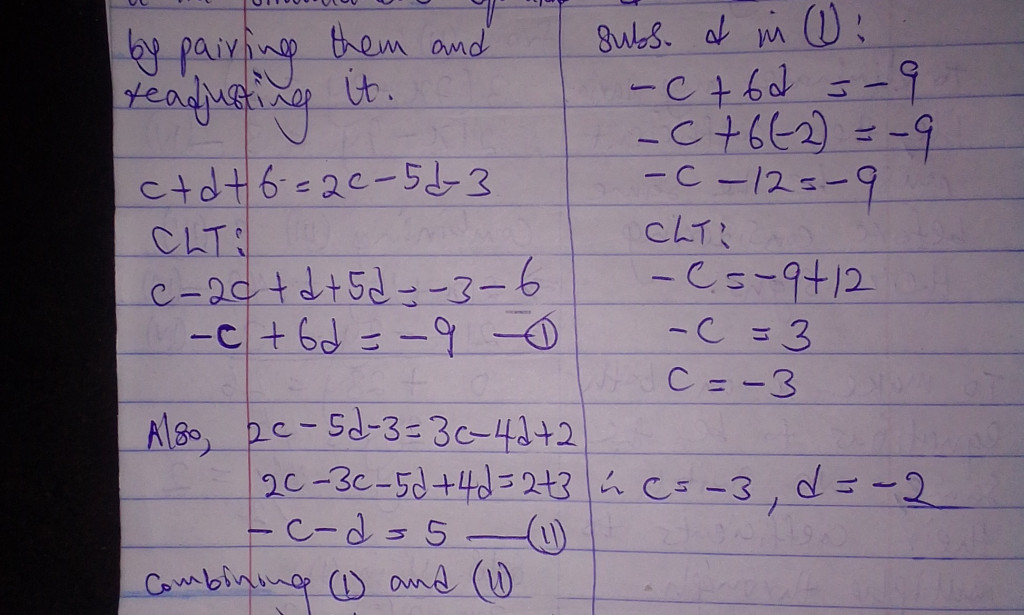Equations with two equality signs:
Example: when it involves expectation with inequality signs, we need to further split it into two equations in order to solve it simultaneously. For instance. Find c and d in the expression below.
c + d + 6 = 2c - 5d -3 = 3c - 4d + 2.
Since we have two equality signs, we have to resolve it into simultaneous equations by pairing them and readjusting it to simultaneous equations as follows.
c + d + 6 =2c - 5d -3
Collect like terms:
c - 2c + d +5d = -3-6
-c +6d = -9 -----(I)
Also, 2c -5d -3 = 3c -4d + 2
CLT: 2c -3c -5d +4d = 2 +3
-c -d = 5 -------(Ii)
combining (I) and (Ii)
-c + 6d = -9 ----(I)
-c - d = 5 -------(Ii)
With the same sign and same coefficient, we eliminate c by subtracting equation (Ii) from equation (I).
We now have this after subtraction.
0 + 7d = -14
7d = -14
d = -14/ 7
d = -2
Substitute d in equation (I):
-c + 6d = -9
-c +6(-2) = -9
-c -12 = -9
CLT:
-c = -9 +.12
-c = 3
c = -3
Therefore, c=-3, d=-2

You must be logged in to post a comment.